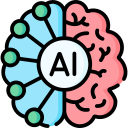Hiring is one of the most crucial responsibilities of HR professionals. It's not just about filling a position; it's about finding the right person who will contribute to the company's growth, culture, and long-term success. To achieve this, HRs must focus on several core pillars that form the foundation of an effective hiring process. Let's explore these pillars and understand how they can guide you toward making better hiring decisions.
1. Clarity in Job Requirements
The first step in the hiring process is defining what you're looking for. This may seem obvious, but clarity in job requirements is often overlooked. A well-defined job description outlines not only the skills and qualifications needed but also the expectations for the role, including key responsibilities, goals, and the impact the position will have on the organization.
Key Points:
- Detailed Job Descriptions: Be specific about the technical skills, soft skills, and experience required.
- Clear Expectations: Define the success metrics for the role.
- Alignment with Business Goals: Ensure the role aligns with the company's strategic objectives.
2. Effective Candidate Sourcing
Finding the right candidates is a critical pillar in the hiring process. It's essential to cast a wide net and use various sourcing methods to reach a diverse talent pool. From job boards to social media, employee referrals, and industry-specific networks, the goal is to attract candidates who not only meet the qualifications but also resonate with the company’s values and culture.
Key Points:
- Diverse Sourcing Channels: Utilize multiple platforms to reach a broader audience.
- Employer Branding: Promote your company culture and values to attract like-minded candidates.
- Candidate Engagement: Keep potential candidates engaged through personalized communication.
3. Structured Interview Process
A structured interview process is crucial for ensuring fairness, consistency, and objectivity. It helps in evaluating candidates on the same criteria, reducing biases, and making more informed decisions. This pillar includes developing a set of standardized questions that focus on the key competencies required for the role.
Key Points:
- Standardized Questions: Prepare questions that evaluate both technical and soft skills.
- Behavioral Interviews: Focus on past behavior as a predictor of future performance.
- Diverse Interview Panels: Include team members from different backgrounds to offer varied perspectives.
4. Thorough Candidate Assessment
Assessment goes beyond the interview. It involves evaluating a candidate's potential to thrive within the company. This can include technical tests, personality assessments, and cultural fit evaluations. The goal is to ensure that the candidate has not only the skills but also the mindset and values that align with the company.
Key Points:
- Skills Assessment: Test candidates on the core competencies required for the role.
- Cultural Fit: Evaluate whether the candidate shares the company's values and work ethic.
- Long-term Potential: Consider the candidate’s ability to grow within the company.
5. Efficient Onboarding Process
The hiring process doesn’t end when a candidate accepts the offer. A well-structured onboarding process is crucial for setting the tone for the new hire’s experience. This pillar focuses on integrating the new employee into the company culture, ensuring they understand their role, and providing the tools and resources they need to succeed.
Key Points:
- Welcoming Environment: Make the new hire feel welcomed and valued from day one.
- Clear Communication: Provide clear instructions and expectations during the onboarding process.
- Continuous Support: Offer ongoing training and support to help the new hire adjust and grow.
6. Continuous Improvement and Feedback
The final pillar is about continuous improvement. HR professionals should regularly review and refine the hiring process based on feedback from candidates, hiring managers, and other stakeholders. This ensures that the process remains efficient, fair, and aligned with the company’s evolving needs.
Key Points:
- Gather Feedback: Collect input from all participants in the hiring process.
- Analyze and Adjust: Regularly assess the effectiveness of your hiring strategy and make necessary adjustments.
- Stay Updated: Keep abreast of industry trends and best practices in hiring.
Conclusion
The hiring process is more than just filling a vacancy; it’s about building the foundation for your company’s future success. By focusing on these core pillars—clarity in job requirements, effective candidate sourcing, a structured interview process, thorough candidate assessment, efficient onboarding, and continuous improvement—HR professionals can ensure they are making the best possible hiring decisions. These pillars not only help in finding the right talent but also in fostering a culture of growth, innovation, and long-term success.
